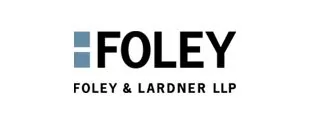As an accompaniment to our "What Every Multinational Should Know" biweekly series, below find an update to our "Five Compliance Best Practices" series, which provides quick-hit advice for multinational companies to implement best practices and to enhance their compliance programs and internal controls.
Minimizing tariffs is a common objective for businesses engaged in international trade, as tariffs can significantly impact the cost of importing or exporting goods. Here are several strategies businesses can consider to minimize tariffs.
- Duty Drawback. A duty drawback is a refund or remission of a customs duty, fee, or internal revenue tax previously imposed. The refunds occur when the product is exported from the United States or destroyed. Duty drawback programs allow businesses to claim refunds or credits for duties paid on imported inputs that are exported or incorporated into exported products. This is a complex process, as it involves imports and exports, but for certain types of transactions it can offer real duty savings.
- Foreign Trade Zone (FTZ). A foreign trade zone is a secured location in or near CBP ports, where no tariffs apply while the product sits in the FTZ. The product can be stored, exhibited, assembled, manufactured, or processed in this zone without any duties being applied. This allows for duty deferral if the goods are eventually withdrawn into the U.S. Customs territory, or potentially no duties at all if the goods are shipped to another country.
- Consider Holding Products in a Bonded Warehouse. Bonded warehouses provide similar benefits by allowing businesses to store imported goods under bond, deferring duty payments until the goods are removed for consumption. Bonded warehouses are buildings or secured locations in which products with duties can be stored or altered without paying the duties for a maximum of five years. If the products are exported, no duty is owed on the products.
- Temporary Importation Under Bond (TIB). When using a TIB, an importer may post a bond for twice the amount of the duties and then must export or destroy the imported items within a specified time or pay damages. TIBs represent another way to handle temporary imports to secure duty savings.
- American Goods Returned.For goods that were initially exported abroad and then returned to the United States, such as for servicing, warranty services, or value-added activities, it may be possible to declare an entered value equal to the value added abroad. If this is a common importing pattern for your company, you should check and see if you are appropriately taking advantage of opportunities to minimize tariffs using the American Goods Returned program.
The content of this article is intended to provide a general guide to the subject matter. Specialist advice should be sought about your specific circumstances.




